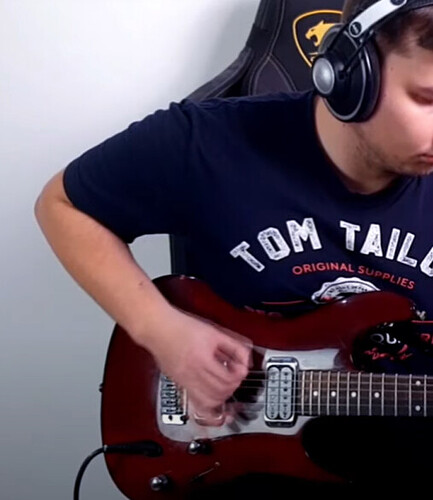I am deviating from the “wrist dance” with this post, but there´s one statement by Anton that really baffles me. (I already posted a link to the following videos above, but I´d really like to know if I am not getting this right.)
At 05:15 Anton says “It is the string that must avoid the pick, and not opposite.”
At 06:45, he says “The string avoids the pick, but the pick is always at the same depth.”
The quesion I have: is that even possible?
In this video here, you can clearly see how the pick moves the string to the side before then passing OVER the string. The string does not move “down”, or in Anton´s words: the string does not “avoid the pick”.
What you can also see is that the pick depth before and after going over each string is actually the same - so the fact that the “string is moving the pick” and “the pick stays at the same height” are not contradictory statements.
Finally, to add to my confusion, his student Dima here demonstrates how it´s done. I don´t see any wiggle room for the tip of the pick to move to the side before passing the string. Is that because the movement of the pick is too fast, or is it actually possible for the pick to stay unimpeded and move the pick “down and under, out of the way”?








